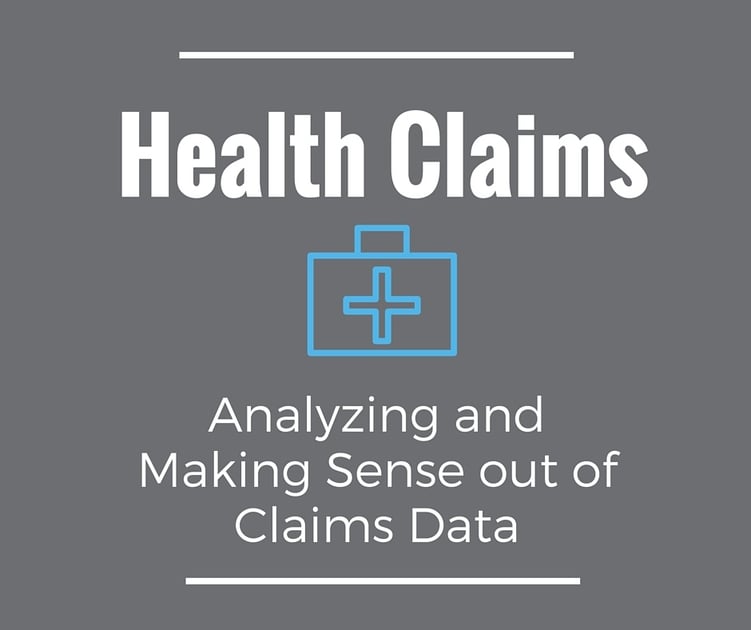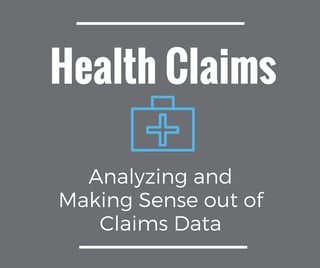Analyzing and Making Sense out of Claims Data
April 5, 2016 •Heather Brotsos

 In this series of blog posts, we are using an all-payer claims database (APCD) from the state of New Hampshire to explore some questions related to the Affordable Care Act (ACA).
In this series of blog posts, we are using an all-payer claims database (APCD) from the state of New Hampshire to explore some questions related to the Affordable Care Act (ACA).
In last week’s post, we discussed our process for accessing claims data through an all-payer claims database (APCD). After investigating the twelve states with publicly accessible APCDs, we opted to request a public use data set from the state of New Hampshire from the New Hampshire Comprehensive Health Care Information System (NH CHIS).
What the data include
The data set from New Hampshire includes medical, dental, and pharmacy claims data for New Hampshire between 2005 and 2014, collected from “insurance companies, third-party payers, third-party administrators, and carriers that provide administrative services for a plan sponsor.” In 2009, New Hampshire expanded its reporting requirements to both self-insured and fully-insured businesses as follows:
- All insurers covering New Hampshire residents must submit claims data for those residents to NH CHIS, regardless of whether the policy was written in New Hampshire or out of state.
- All policies written inside New Hampshire, regardless of whether they cover in-state or out-of-state residents, must supply that claims data to NH CHIS.
Our Question
As part of the Affordable Care Act (ACA), private plans must cover a set of preventive services with no patient cost sharing. Simply put, this means that for a qualifying service, the patient should not be charged a deductible, copay, coinsurance, or any other fee. Health and Human Services (HHS) outlines all qualifying services here.
We wanted to find out if there has been any change in the utilization of and patient responsibility for these services since implementation of the ACA. First, we attempted to locate a list of procedure codes and diagnoses codes that correspond to the Department of Health and Human Services (HHS) qualifying services. When our initial research failed to yield a comprehensive or authoritative source for procedure codes, we turned to the HHS Innovation Lab’s Demand Driven Open Data project for help. We later found a source from the Centers for Disease Control listing procedure and diagnosis codes that correspond with the preventive services outlined by HHS.
Using this additional data, we transformed the procedure and diagnosis codes into a machine-readable format, which involved converting code ranges to a list, organizing codes into a tabular format, and adding relevant information such as effective date and additional restrictions. My Github further details how I associated these preventative services to procedure and diagnosis codes.
Now that we’ve got our claims data and our research question, check back next week to explore the data.
Get Updates
Featured Articles
Categories
- affordable housing (12)
- agile (3)
- AI (4)
- budget (3)
- change management (1)
- climate resilience (5)
- cloud computing (2)
- company announcements (15)
- consumer protection (3)
- COVID-19 (7)
- data analytics (82)
- data science (1)
- executive branch (4)
- fair lending (13)
- federal credit (36)
- federal finance (7)
- federal loans (7)
- federal register (2)
- financial institutions (1)
- Form 5500 (5)
- grants (1)
- healthcare (17)
- impact investing (12)
- infrastructure (13)
- LIBOR (4)
- litigation (8)
- machine learning (2)
- mechanical turk (3)
- mission-oriented finance (7)
- modeling (9)
- mortgage finance (10)
- office culture (26)
- opioid crisis (5)
- Opportunity Finance Network (4)
- opportunity zones (12)
- partnership (15)
- pay equity (5)
- predictive analytics (15)
- press coverage (3)
- program and business modernization (7)
- program evaluation (29)
- racial and social justice (8)
- real estate (2)
- risk management (10)
- rural communities (9)
- series - loan monitoring and AI (4)
- series - transforming federal lending (3)
- strength in numbers series (9)
- summer interns (7)
- taxes (7)
- thought leadership (4)
- white paper (15)



